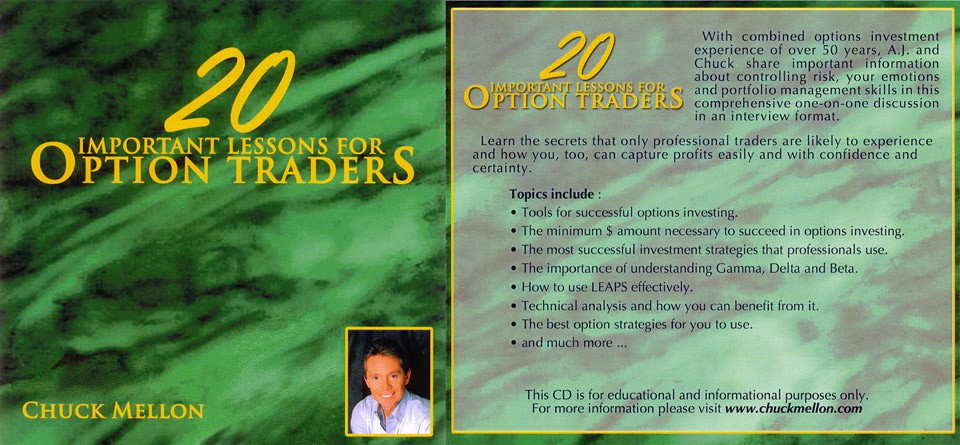Risk Management Techniques For Active Traders_1
Post on: 20 Июль, 2015 No Comment

Browse in Fortune Cookie Wisdom Investment Wisdom Statistics Tools and Resources
Risk management is an essential but often overlooked prerequisite to successful active trading. After all, a trader who has generated substantial profits over his or her lifetime can lose it all in just one or two bad trades if proper risk management isnt employed. This article will discuss some simple strategies that can be used to protect your trading profits.
Planning Your Trades
As Chinese military general Sun Tzus famously said: Every battle is won before it is fought. The phrase implies that planning and strategy not the battles win wars. Similarly, successful traders commonly quote the phrase: Plan the trade and trade the plan. Just like in war, planning ahead can often mean the difference between success and failure.
Stop-loss (S/L) and take-profit (T/P) points represent two key ways in which traders can plan ahead when trading. Successful traders know what price they are willing to pay and at what price they are willing to sell, and they measure the resulting returns against the probability of the stock hitting their goals. If the adjusted return is high enough, then they execute the trade.
Conversely, unsuccessful traders often enter a trade without having any idea of the points at which they will sell at a profit or a loss. Like gamblers on a lucky or unlucky streak, emotions begin to take over and dictate their trades. Losses often provoke people to hold on and hope to make their money back, while profits often entice traders to imprudently hold on for even more gains.
Stop-Loss and Take-Profit Points
A stop-loss point is the price at which a trader will sell a stock and take a loss on the trade. Often this happens when a trade does not pan out the way a trader hoped. The points are designed to prevent the it will come back mentality and limit losses before they escalate. For example, if a stock breaks below a key support level, traders often sell as soon as possible.
On the other side of the table, a take-profit point is the price at which a trader will sell a stock and take a profit on the trade. Often this is when additional upside is limited given the risks. For example, if a stock is approaching a key resistance level after a large move upward, traders may want to sell before a period of consolidation takes place.
How to Effectively Set Stop-Loss Points
Setting stop-loss and take-profit points is often done using technical analysis, but fundamental analysis can also play a key role in timing. For example, if a trader is holding a stock ahead of earnings as excitement builds, he or she may want to sell before the news hits the market if expectations have become too high, regardless of whether the take-profit price was hit.
Moving averages represent the most popular way to set these points, as they are easy to calculate and widely tracked by the market. Key moving averages include the five-, nine-, 20-, 50-, 100- and 200-day averages. These are best set by applying them to a stocks chart and determining whether the stock price has reacted to them in the past as either a support or resistance level.
Another great way to place stop-loss or take-profit levels is on support or resistance trendlines. These can be drawn by connecting previous highs or lows that occurred on significant, above-average volume. Just like moving averages, the key is determining levels at which the price reacts to the trendlines, and of course, with high volume.
When setting these points, here are some key considerations:
Use longer-term moving averages for more volatile stocks to reduce the chance that a meaningless price swing will trigger a stop-loss order to be executed.
Adjust the moving averages to match target price ranges; for example, longer targets should use larger moving averages to reduce the number of signals generated.
Stop losses should not be closer than 1.5-times the current high-to-low range (volatility), as it is too likely to get executed without reason.
Adjust the stop loss according to the markets volatility; if the stock price isnt moving too much, then the stop-loss points can be tightened.

Use known fundamental events, such as earnings releases, as key time periods to be in or out of a trade as volatility and uncertainty can rise.
Calculating Expected Return
Setting stop-loss and take-profit points is also necessary to calculate expected return. The importance of this calculation cannot be overstated, as it forces traders to think through their trades and rationalize them. As well, it gives them a systematic way to compare various trades and select only the most profitable ones.
This can be calculated using the following formula:
[ (Probability of Gain) x (Take Profit % Gain) ] + [ (Probability of Loss) x (Stop Loss % Loss) ]
The result of this calculation is an expected return for the active trader, who will then measure it against other opportunities to determine which stocks to trade. The probability of gain or loss can be calculated by using historical breakouts and breakdowns from the support or resistance levels; or for experienced traders, by making an educated guess.
The Bottom Line
Traders should always know when they plan to enter or exit a trade before they execute. By using stop losses effectively, a trader can minimize not only losses, but also the number of times a trade is exited needlessly. Make your battle plan ahead of time so youll already know youve won the war.
www.investopedia.com/articles/trading/09/risk-management.asp














